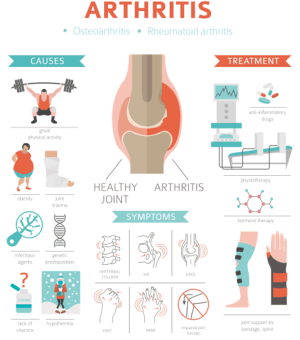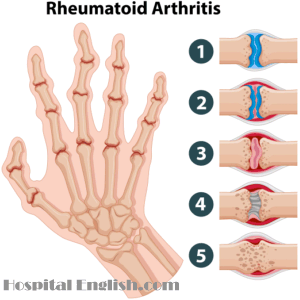Disease State Directors: these articles prepare students to explain about the disease itself and also be able to relay the important information that patients should know.
Arthritis
Pre-Reading Vocabulary:
arthritis
brace
cartilage
crystallize
diagnose
gender
gout
immune system
inflammation
inflammatory response
joint
osteoarthritis
overweight
pain relievers
prevalent
rheumatoid arthritis
risk factors
splint
stiffness
strenuous activity
swelling
symptoms
synovial fluid
synovial lining
tenderness
tissue
treatment
uric acid

Listen to the 2 articles:
Listen and try to answer the discussion questions or take the quiz. You can also listen and read along with the scripts below.
Listen to the audio file for Asthma: The Disesase and then you may advance to the discussion or comprehension questions. Listen as many times as you need to answer the questions. (You can read the full articles below.)
Listen to the audio files and then you may advance to the discussion or comprehension questions. Listen as many times as you need to answer the questions. (You can read the full articles below.)
Follow-ups:
- After completing the test exercises, try the speaking activity with the conversation questions.
- Roleplay a doctor/patient dialog where the physician explains about the disease to a new arthritis patient.
For self study: Verify you understand the key words for the articles. Then try to answer the following conversation questions, speaking out loud.
Discussion Questions:
- What are some risk factors for arthritis?
- What are some of the main types of arthritis?
- What are some treatment options available to arthritis patients?
Reading Article 1: read the article and then answer the questions.
Article 1: Overview of Arthritis ![]()
Arthritis is a general term that refers to over a hundred different types of joint inflammation. This joint inflammation causes swelling, pain and stiffness. If the disease lasts long or occurs repeatedly, it can lead to tissue damage. The typical signs of arthritis are swelling of the joint that is warm to the touch, pain, tenderness, stiffness, redness and loss of function. Arthritis is not always limited to the joints of the body and can affect soft tissues and internal organs.
In the joint, inflammation causes damage to the cartilage and synovial lining. When the cartilage is warn down, the space in the joint becomes smaller and the bones may rub together. Damage to the synovial lining cause synovial fluid to leak and produce fluid in the joint lining. This adds to the swelling along with the inflammatory response of the body. If the joint lining continues to grow, it can permanently damage the bone. All of this causes pain, swelling and distress for the patient.
The three most common types of arthritis are:
Osteoarthritis: This is the most prevalent. In osteoarthritis, the cartilage of the bone slowly wears away with age and the bones rub together.
Rheumatoid Arthritis(RA.): In rheumatoid arthritis, the body's immune system begins to attack the joints of the body causing the joint lining to swell.
Gout: Gout is a condition where the body cannot effectively remove uric acid and the uric acid crystallizes in the joints like needles. These crystals cause swelling and severe pain.

Comprehension Questions:
1. What type of disease is arthritis?
2. What are some common signs of arthritis?
3. What causes the swelling in arthritis?
4. What are the three most common types of arthritis?
5. What is the difference between osteoarthritis and rheumatoid arthritis?
Reading Article 2: read the patient information article and then answer the questions.
Article 2: Information for the Patient ![]()
Arthritis is caused by inflammation inside the joints of the body. Arthritis is very common and affects almost a third of the American population. There are many types of arthritis and in general the causes are still unknown. However, there are some risk factors for arthritis. These may include age, gender, lifestyle factors, and being overweight. With age, the cartilage in the joints wears down causing the most common type of arthritis, osteoarthritis. Arthritis also occurs more often in women than men. Work conditions that require heavy lifting and being overweight cause heavy stress on the joints of the body.
Some common symptoms of arthritis are redness, joint pain, swelling, warmth around the joint, and stiffness. To diagnose arthritis a variety of blood tests and x-rays may be necessary. There are more than 100 different types of arthritis and treatment may vary depending on the type of arthritis the patient has.
Treatment for arthritis generally involves pain management, exercise and relaxation. The goals of arthritis treatment are to avoid pain and further destruction of the joint. One way is to avoid activities that cause pain. When the joint becomes painful, pain relievers and anti-inflammatory medication should be taken to relieve the pain and swelling. A physical therapist can advise exercise routines that help maintain joint mobility. Lastly, the patient should use braces, splints and supporters to help support the joints especially during strenuous activities. Surgery to correct the joint damage may also be an option.
Treatment will vary with the type of arthritis and the patient. Factors to take under consideration are age, current medications, overall health and medical history.
Comprehension Questions:
1. What are some risk factors for developing arthritis?
2. What are the symptoms of arthritis?
3. How is arthritis diagnosed?
4. What are the goals of treatment with arthritis?
5. What are some ways patients can help manage their condition?


End User License Agreement: You are free to download any resource from this site as an end user and MES-English.com grants you an End User License with the following restrictions: You may not redistribute, copy, modify, transfer, transmit, repackage, charge for or sell any of the materials from this site. You may use photocopies or printouts for distribution to your students. MES reserves the right to terminate or make changes to this agreement for any reason and without notice.
Copyright © 2006 - 2025 Hospital English | restrictions | privacy | about | contact
